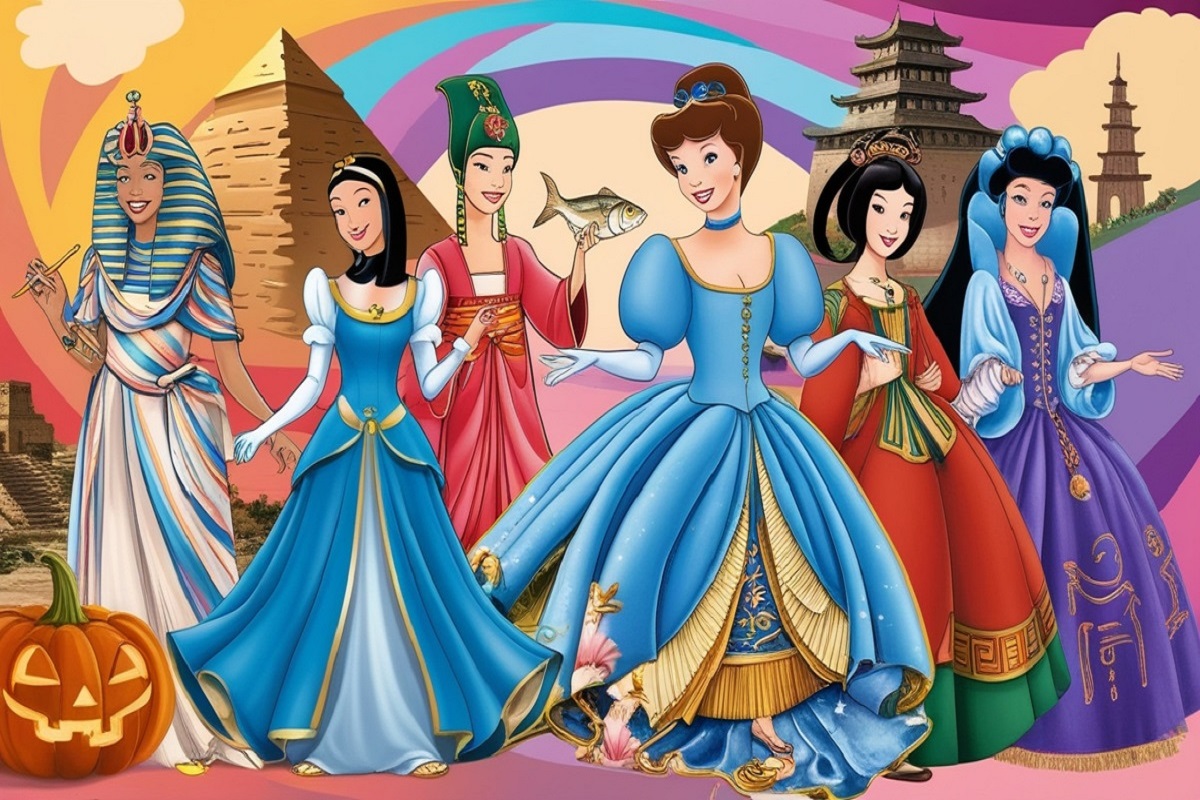The timeless tale of Cinderella has captivated audiences for centuries, with its themes of overcoming oppression and finding happiness. This classic story has been retold and adapted in numerous cultures. Each version reflects the unique cultural and historical context of its origin. From ancient Greece to modern Europe, Cinderella’s story has evolved, yet its core elements remain unchanged. This article will delve into the rich history and original story of Cinderella.

Original Story of Cinderella: Known First Version
The story of Cinderella is believed to have its roots in ancient Greece. It is known as the tale of Rhodopis. This version dates back to the first century CE.
It tells the story of a Greek slave girl who marries the king of Egypt after an eagle steals one of her sandals and drops it in his lap.
This ancient tale is one of the earliest recorded variants of Cinderella. This sets the stage for the many adaptations that will follow.
Keep reading to find more versions of the original Cinderella story.
1. Chinese Cinderella: Ye Xian
In the ninth century CE, the Chinese version of Cinderella, known as Ye Xian, emerged. This story is set in ancient China and tells of a young girl named Ye Xian.
She loses her mother at a young age. Her mother appears to her as a magic fish and guides her to prepare for a local festival. As Ye Xian flees the festival, she loses one of her golden shoes. The king subsequently finds and uses it to search for her.
This version of the story is notable for its use of magical elements and the role of the deceased mother as a guiding force.
2. Iranian Cinderella: Moon Brow
In the tale of Shahrbanou in Iran, Cinderella’s story is retold.
She lives with her evil stepmother and stepsister. Shahrbanou marries a prince after he falls in love with her at a wedding.
This version highlights the themes of love and redemption, as Shahrbanou overcomes her difficult circumstances to find happiness with the prince.
3. Italian Cinderella: Cenerentola
The Italian version of Cinderella, known as Zezolla by Giambattista Basile, dates back to 1634.
This tale includes Zezolla, the daughter of an Italian Prince. She is betrayed by her governess and forced to live the life of a servant. With assistance from a date-tree given to her by the Fairies of Sardinia, Zezolla is able to attend the feast announced by the king and her life is forever changed.
The story is notable for its use of magical elements and the dramatic search for the missing slipper, which would become a staple of many subsequent adaptations.
4. French Cinderella: Cendrillon ou la petite pantoufle de verre
The French version of Cinderella is written by Charles Perrault in 1697. It is one of the most famous and influential adaptations.
This tale introduces the pumpkin, the fairy godmother, and “glass” slippers.
Perrault’s version is credited with popularizing many of the elements that have become synonymous with the Cinderella story. This includes the magical transformations and the search for the missing slipper.
5. German Cinderella: Aschenputtel
The Brothers Grimm adapted a characteristically intense version of the Cinderella story in 1812, titled Aschenputtel.
This tale includes a wishing tree instead of a fairy godmother, and Cinderella’s stepsisters suffer a terrible punishment for their cruelty.
The story is notable for its dark and dramatic tone, which has influenced many subsequent adaptations, including the musical Into the Woods.
6. The Ubiquity of Cinderella
Today, there are over 500 variants of Cinderella in Europe alone. Hundreds of films feature direct adaptations or have plots loosely based on the story.
The Cinderella story is so ubiquitous in the English-speaking world that the phrase Cinderella Story has come to describe any rags-to-riches tale.
This widespread popularity is a testament to the enduring appeal of the Cinderella narrative, which continues to captivate audiences across cultures and generations.
7. Pacific Northwest Ballet’s Cinderella
Pacific Northwest Ballet’s production of Cinderella was conceived and choreographed in 1994 by Founding Artistic Director Kent Stowell. It highlights the contrast between the Real World and the Dream World of Cinderella’s experience.
It features an epic score by Sergei Prokofiev, resplendent costumes, and sets that evoke an exquisite 18th-century world. PNB’s Cinderella is a fully realized romantic fairy tale for our time. This production showcases the timeless themes of Cinderella, blending traditional elements with modern artistic flair.
Frequently Asked Questions (FAQs)
Q1. Who wrote the original story of Cinderella?
Ans. The earliest written story of Cinderella is believed to be by Giambattista Basile in 1634.
Q2. How old was Cinderella in the original story?
Ans. Cinderella’s exact age isn’t mentioned, but she is depicted as a young, unmarried woman.
Q3. What was Cinderella’s slipper made of in the original story?
Ans. In the most popular version by Charles Perrault, Cinderella’s slipper is made of glass.
Q4. Where did the story of Cinderella originate?
Ans. The story of Cinderella is thought to have originated in ancient Greece.
Conclusion
The original story of Cinderella continues to captivate audiences across cultures and generations, with its themes of overcoming oppression and finding happiness. Whether through the magical transformations of Perrault’s version or the dark and dramatic tone of the Grimm brothers’ adaptation, Cinderella remains a timeless and universal story that continues to inspire and delight.
Recommended: Narnia’s Wardrobe vs Alice’s Rabbit Hole: A Tale of Two Portals




Your articles are very helpful to me. May I request more information?
Hi I Fashion Styles,
Thank you for your kind words! I’m glad my articles are helpful to you.
Please feel free to ask your question. I’ll do my best to assist you. If it’s something I can’t directly answer, I may be able to point you in the right direction.
Best Regards,
Keerthana Prakasam